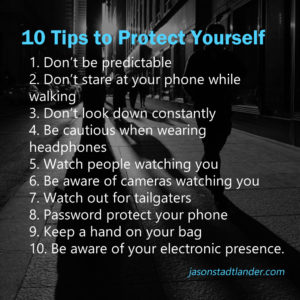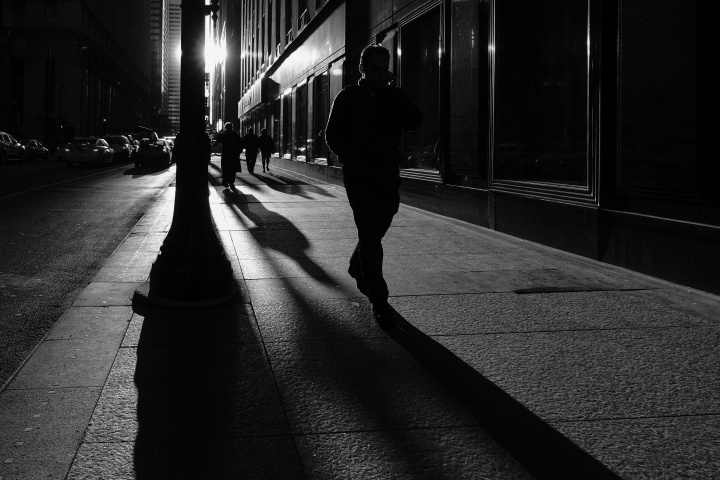As I delve more and more into protecting personal information, protecting networks and helping with physical security – I tend to find myself thinking a lot about the security of the average person on the street. I walk down the street, mentally assessing each person’s vulnerability. Yeah, I know… it sounds a little creepy, but it’s amazing how many people are unaware of their surroundings.
So I want to take a moment and give you a few pointers on what I would term “S.A.R.E.”: Self Awareness at Recognizing Enemies.
It’s not about seeing everyone around you as an enemy. It’s about recognizing what your vulnerabilities are to an attack anytime you are in the public. I am shocked at how many people walk through the city, not paying attention to what is going on around them. Staring at their phones or simply not being aware of their surroundings.
I could make this list 20-30 items long, but these are what I would say are the most critical. And trust me men, this applies to you as much as to women.
 Ten Tips to Protect Yourself:
Ten Tips to Protect Yourself:
- Don’t be predictable. Be sure to alternate routes that you take when walking. Change up your schedule a little (even 5 minutes plus or minus can make a difference)
- Don’t stare at your phone while walking or being on the street. Glancing at your phone is fine, especially when following directions. Being fixated on your screen can cause you to trip, or more importantly be a target for an attack. Do not try and catch up on facebook or Instagram as you stand on the platform waiting for your train. You can catch up on that when you get on the train. Train platforms and bus stops are ideal locations for attackers and thieves.
- Don’t look down at your feet. Keep your eyes ahead of you. Looking down at the ground is a natural psychological trait. It enables us to not have to make eye contact with those around us (which in a city can be a LOT of people) and it allows us to be focused on our own little microcosm. But it’s very dangerous, especially when mixed with tip 3. If you’re looking down, you won’t see someone coming if you are their target and you also won’t be able to identify someone or a car if there is an incident that you ‘witness’. Look around at people constantly. You don’t need to make eye contact, but you need to be able to identify people if something happens.
- Be careful when wearing headphones while walking. Keep the volume low. If you can’t hear someone coming up behind you, then you can’t protect yourself, your purse or your backpack. If I were targeting someone for theft, I would absolutely look for someone with headphones on and looking down.
- Watch people watching you. It’s critical on the street, in the gym, even in the locker room to be aware of those around you. Try and mentally assess their motives, how much they are observing you, what kind of vibe do you get from each person. Trust your gut.
- Look around and be aware of the cameras that are watching you. This isn’t just seeing security cameras to ensure that you walk in areas that will see you if something happens. It’s also about making sure that you are not being videoed or photographed by someone with a phone without your permission.
- Watch out for tailgaters. A tailgater is someone that acts like they have access to the same building/gate that you have access to and following you in. If you don’t recognize someone and they are following you into a secure area, question them. (“Can I help you?”)
- Password protect your phone and don’t leave your phone at your workspace. Today’s phones are not cheap (as we all know). They are prime targets for would-be thieves.
- Keep your backpack/purse secured on yourself. Holding the strap of your backpack or your purse will ensure that even if someone ran by and grabbed your bag, they will have to handle the fact that you are already holding onto it.
- Be aware of your electronic presence. Google yourself regularly. See what shows up. Be aware of the photos you post. Don’t ever “check-in” when away from home, it’s a blazing announcement that it’s ok to go rob your home. Never post photos when on vacation on the same day you take them.


 Tis the season for giving technology gifts and with that comes parental responsibility.
Tis the season for giving technology gifts and with that comes parental responsibility.